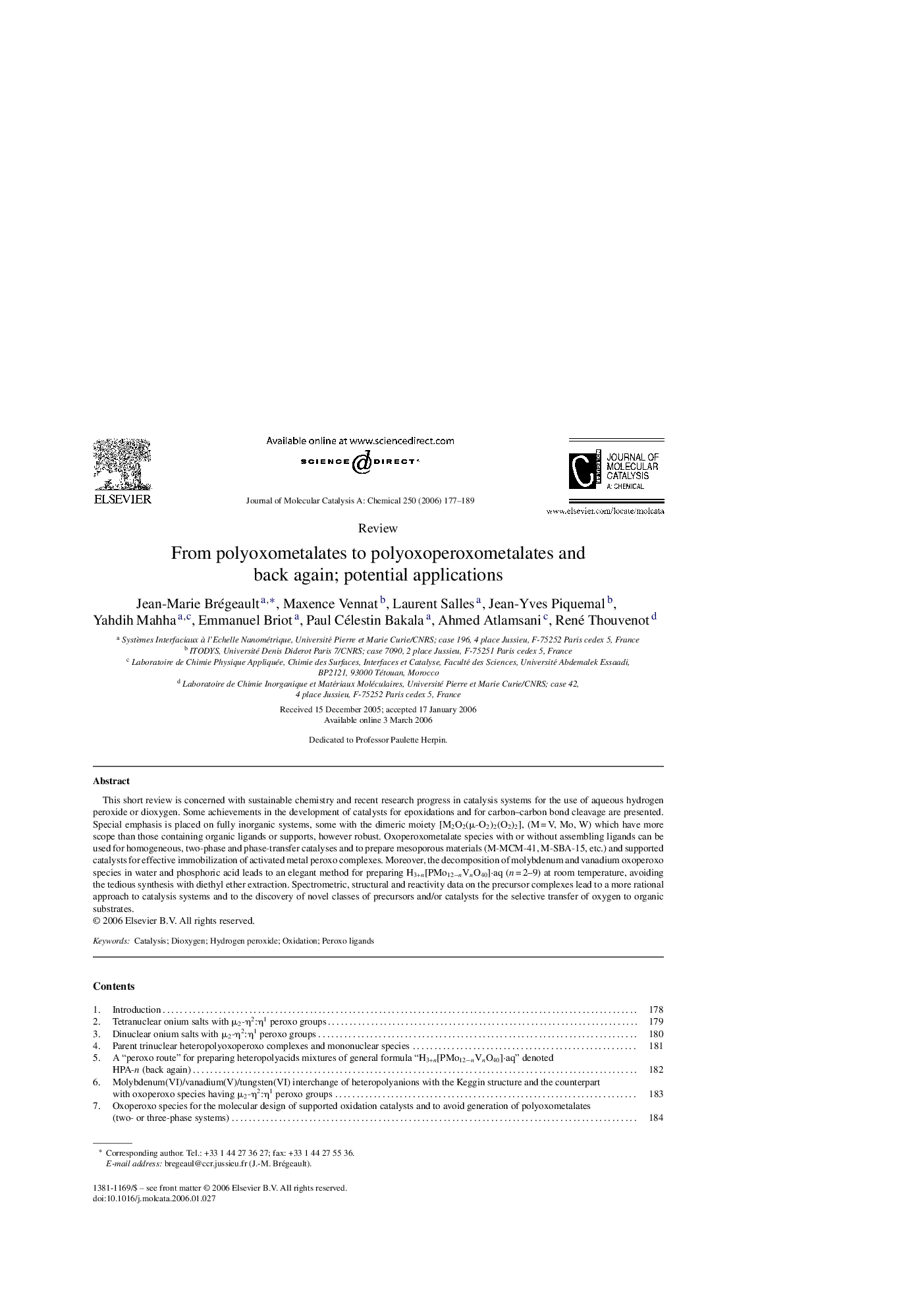| Article ID | Journal | Published Year | Pages | File Type |
|---|---|---|---|---|
| 68730 | Journal of Molecular Catalysis A: Chemical | 2006 | 13 Pages |
This short review is concerned with sustainable chemistry and recent research progress in catalysis systems for the use of aqueous hydrogen peroxide or dioxygen. Some achievements in the development of catalysts for epoxidations and for carbon–carbon bond cleavage are presented. Special emphasis is placed on fully inorganic systems, some with the dimeric moiety [M2O2(μ-O2)2(O2)2], (M = V, Mo, W) which have more scope than those containing organic ligands or supports, however robust. Oxoperoxometalate species with or without assembling ligands can be used for homogeneous, two-phase and phase-transfer catalyses and to prepare mesoporous materials (M-MCM-41, M-SBA-15, etc.) and supported catalysts for effective immobilization of activated metal peroxo complexes. Moreover, the decomposition of molybdenum and vanadium oxoperoxo species in water and phosphoric acid leads to an elegant method for preparing H3+n[PMo12−nVnO40]·aq (n = 2–9) at room temperature, avoiding the tedious synthesis with diethyl ether extraction. Spectrometric, structural and reactivity data on the precursor complexes lead to a more rational approach to catalysis systems and to the discovery of novel classes of precursors and/or catalysts for the selective transfer of oxygen to organic substrates.
Graphical abstractSpectrometric, structural and reactivity data on precursor complexes, lead to a more rational approach to catalysis systems and to the discovery of novel classes of precursors and/or catalysts. Figure optionsDownload full-size imageDownload as PowerPoint slide
